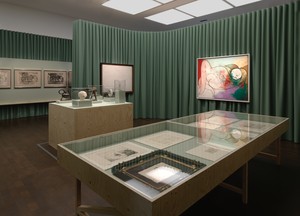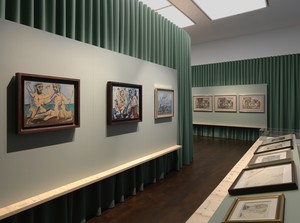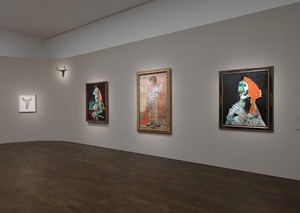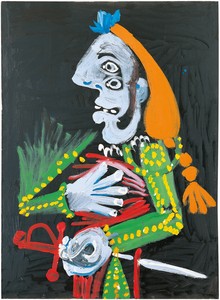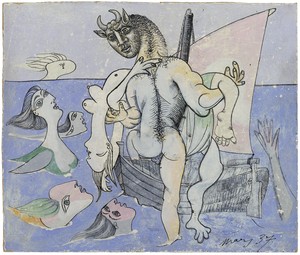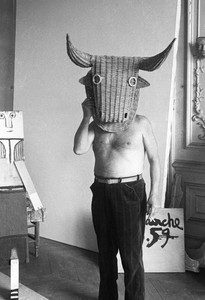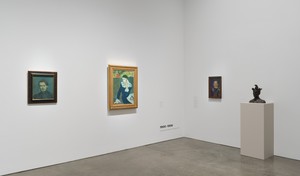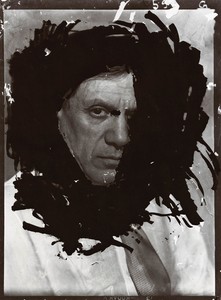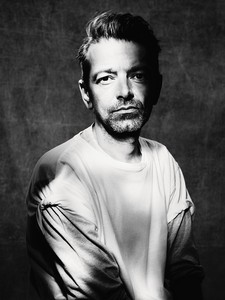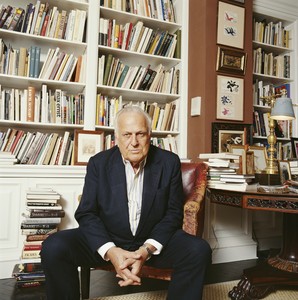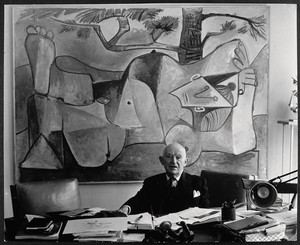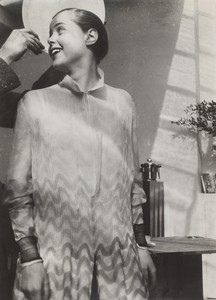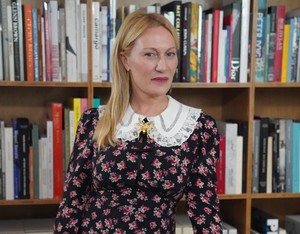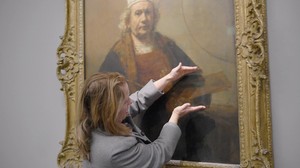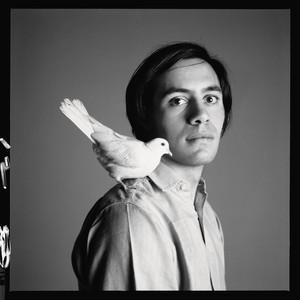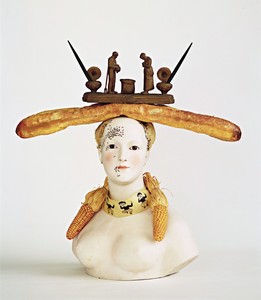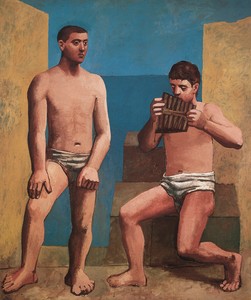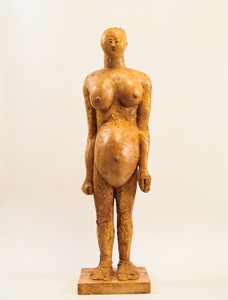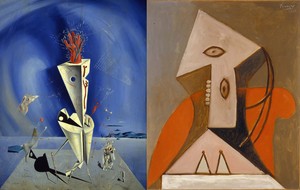If all the ways I have been along were marked on a map and joined up with a line, it might represent a Minotaur.
—Pablo Picasso
Gagosian, in partnership with Pablo Picasso’s grandson, Bernard Ruiz-Picasso, is pleased to present Picasso: Minotaurs and Matadors, curated by Sir John Richardson. The exhibition examines the intersection of Picasso’s bullfighting imagery with his mythological and biographical compositions of the 1930s. Including works dating from 1889 to 1971, this career-long survey traces Picasso’s engagement with the ancient rituals and narratives of his native Mediterranean.
Though one of history’s most innovative modernists, Picasso was grounded in the traditions of his Spanish heritage. Born in the southern port of Málaga in 1881, he was a lifelong aficionado of the drama of the bullfight; matadors, picadors, horses, and bulls were recurring subjects throughout his body of work, from his earliest childhood drawings to some of his final paintings. In the 1930s, at a time of upheaval and personal strife, Picasso began to create allusive narrative works ripe for Surrealist interpretation, infusing the theatrical combat of the corrida with mythic elements of antiquity. His synthesis of the Minotaur myth, the Spanish cult of the bull, and the intimate details of his private life led to the creation of illustrated books, poetry, set designs, sculpture, ceramics, the celebrated Vollard Suite of prints, and masterpieces such as La Minotauromachie (1935) and even Guernica (1937). After Picasso returned to live in the Mediterranean after World War II, his work would continue to be steeped in mythology and bullfighting for the remainder of his life. Picasso’s depictions of Minotaurs and matadors provide a key for biographical and scholarly investigation into an oeuvre that he confessed to having created as if keeping a diary. The exhibition aims to examine the proposal Picasso described in the quote above, presenting fresh perspectives on some of Picasso’s myths and monsters.
Comprised of paintings, drawings, sculpture, prints, ceramics, and a home movie made by Picasso in 1929, Picasso: Minotaurs and Matadors is presented in an innovative installation designed by the Stirling Prize–winning architecture firm Caruso St. John, and is accompanied by a fully illustrated catalogue with essays by Richardson, noted Picasso scholars Michael FitzGerald and Gertje Utley, and historian of Greek art and archaeology Clemente Marconi.
